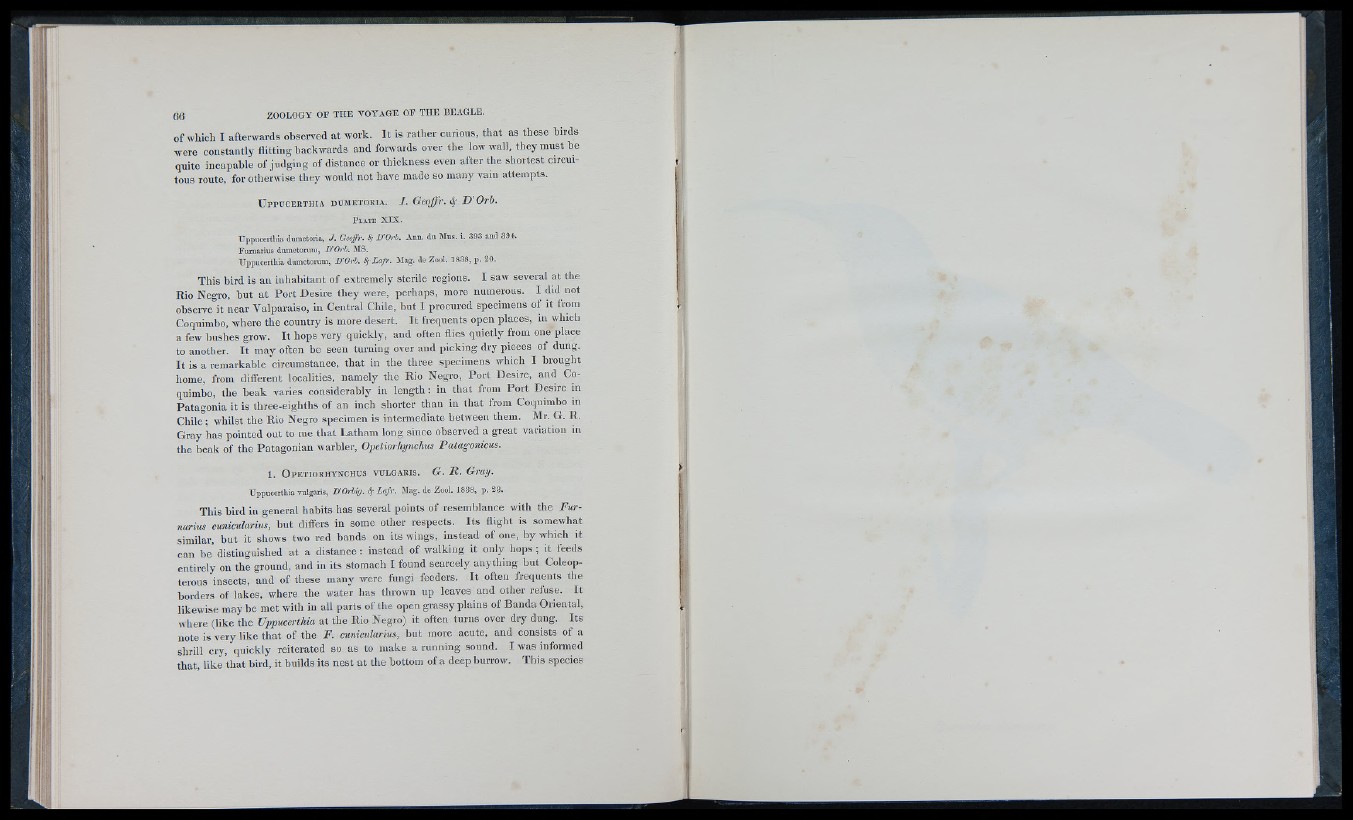
of which I afterwards observed at work. It is rather cxirious, that as these birds
were constantly flitting backwards and f o iw d s over the low wall, they must be
quite incapable of judging of distance or thickness even after tbe shortest circuì-
tous route, for otherwise they would not have made so many yaiii attempts.
U p p u c e r t h i a d u m e t o r i a . / . Geoffr. .
P l a t e X IX .
* D'Orb.
Uppucerthia dumetoria, J . Geoffr. S,' DOrh. Ann. du Mus. i. 393 and 394.
Furnarius dunietorum, D'Orh. MS.
Uppucerthia dumetorum, D'Orh. Lafr. Mag. de Zool. 1838, p. 20.
This bird is an inhabitant of extremely sterile regions. I saw several at the
Rio Negro, but at Port Desire they were, perhaps, more numerous. I did not
observe it near Valparaiso, in Central Chile, but I procured specimens of it from
Coquimbo, where the country is more desert. It frequents open places, in which
a few bushes grow. It hops very quickly, and often flies quietly from one place
to another. It may often be seen turning over and picking dry pieces of dung.
It is a remarkable circumstance, that in the three specimens which I brought
home, from different localities, namely the Rio Negro, Port Desire, and Coquimbo,
tbe beak varies considerably in length; in that from Port Desire in
Patagonia it is three-eighths of an inch shorter than in that from Coquimbo in
Chile ; whilst the Rio Negro specimen is intermediate between them. Mr. G. R.
Gray has pointed out to me that Latham long since observed a great variation in
the beak of the Patagonian warbler, Opetiorhynchus Palagonicus.
1 . O p e t io b h y k c h u s v u l g a r i s . G. R . Gray.
Uppucerthia vulgaris, UOrUg. S; Lafr. Mag. de Zool, 1838, p. 23.
This bird in general habits has several points of resemblance with the Furnarius
cunicularius, but differs in some other respects. Its flight is somewhat
similar, but it shows two red bands on its wings, instead of one, by which it
can be’ distinguished at a distance : instead of walking it only hops ; it feeds
entirely on the ground, and in its stomach I found scarcely anything but Coleopterous
insects, and of these many were fungi feeders. It often frequents the
borders of lakes, where the water has thrown up leaves and other refuse. It
likewise may be met with in all parts of the open grassy plains of Banda Oriental,
where (like the Uppucerthia at the Rio Negro) it often turns over dry dung. Its
note is very like that of the F. cunicularius, but more acute, and consists of a
shrill cry, quickly reiterated so as to make a running sound. I was informed
that, like that bird, it builds its nest at the bottom of a deep burrow. This species